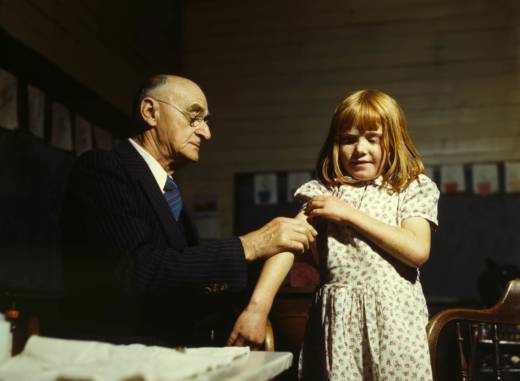If somebody asked you to drink a solution filled with live bacteria that can cause typhoid, you'd probably say ... no.
But more than 100 healthy adults visited an Oxford clinic within the past two years to take a gulp of faith. They swallowed a swig of bacteria to help scientists test a new vaccine for fighting typhoid, a disease spread through contaminated food or water and affecting 21 million people per year, particularly in south Asia and sub-Saharan Africa. As a result of those trials, researchers were able to prove that a new typhoid vaccine is the most effective yet, according to a study led by the Oxford Vaccine Group in The Lancet.
"I think they did a beautiful job," says Myron Levine, the University of Maryland School of Medicine's associate dean for Global Health, Vaccinology and Infectious Diseases, who was not involved with the study. "Unless you have experience trying to do this kind of study, you can't fully appreciate how hard it is to bring participants in and get them to do the challenge."
This study is not the first to rely on healthy volunteers willing to expose themselves to serious diseases. In 1959, scientists at the University of Maryland began inoculating volunteers and exposing them to typhoid. The model worked; over 16 years, researchers recruited almost 1,900 volunteers and published numerous studies about resistance to the disease, including proving the efficacy of a typhoid oral vaccine. But the researchers recruited among prison inmates, prompting a lawsuit from the American Civil Liberties Union, which charged that the prisoners were coerced into participating. The suit was unsuccessful because the ACLU could not prove its case. Nonetheless, the Prison Volunteer Research Unit at the University of Maryland closed in 1974.
The model of human guinea pigs, however, has endured. Inoculating healthy volunteers and exposing them to disease has a couple of advantages, according to Andrew Pollard, director of the Oxford Vaccine Group and lead author of the recent paper. In more traditional field studies, researchers must vaccinate a large group of people and hope the participants naturally come into contact with the targeted disease in order to test the vaccine's effectiveness. But there's no guarantee participants will be exposed to the disease. What's more, people living in an area where a disease is prevalent might have some immunity already.

9(MDAxOTAwOTE4MDEyMTkxMDAzNjczZDljZA004))